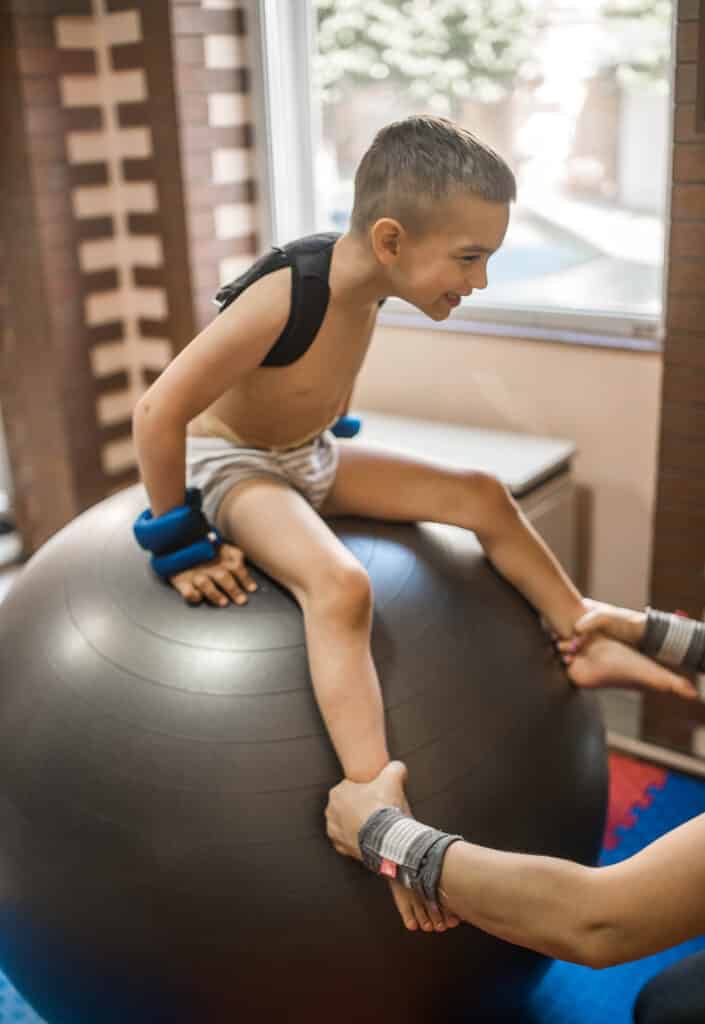Postural stability refers to the ability to maintain your body in a position to effectively complete a task or demand, using large muscle groups at the shoulders, trunk, and hips.
Postural stability requires adequate strength in the postural muscles as well as neuromotor control to co-activate the muscles on all sides. It is also important to have appropriate postural righting reflexes. In a typically developing child, postural control develops from the head down; we first learn to keep our head steady, then slowly can keep our trunk steady over our feet as we improve our motor skills.
If your child has poor head control or often falls in sitting or standing, our physical and occupational therapists can help!



